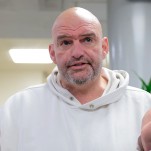FYI: Terrorists Can Be Hot and Black Men Can Be Innocent
LatestThis week, Rolling Stone made everyone very mad by putting a picture of suspected Boston Marathon bomber Dzokhar Tsarnaev on the cover of the magazine. Rolling Stone was accused of “glamorizing” terror by using a photo of Tsarnaev that made him look like a “rock star.” Boston Mayor Tom Menino said the cover “rewards a terrorist with celebrity treatment.” The controversy has led CVS and other stores in the New England area to refuse to sell the issue.
Why are we so upset about this Rolling Stone cover? Inside the magazine is an extensively reported story by Janet Reitman, who investigated Tsarnaev for two months in the hopes of understanding what turns a normal kid into a “radical.” It’s a story about Tsarnaev, not the first responders or the victims (maybe it should have been, I don’t know). It makes sense that the cover would reflect the subject matter of the piece. When I look at the image Rolling Stone picked, I don’t see glamor or celebrity. I see Tsarnaev, in his Caucasianness, looking completely…normal. There he is, wearing some cheesy Armani Exchange t-shirt and looking so goddamn normal. Boring, even.
Perhaps the anger surrounding this cover is because we’ve come to rely on the popular narrative of all criminals = bad guys. This image of Tsarnaev doesn’t comport with our vision of “badness.” It’s scary to think that a young man accused of monstrous things might actually be a real, fully-formed human being who is not a comically evil cartoon villain. Why doesn’t he look like he just left a Legion of Doom meeting?! A friend of one of the bombing victims took Rolling Stone to task for using a “sympathetic” photo of Tsarnaev. Others have called the picture “dreamy,” “flattering,” and “brilliant.” Tsarnaev doesn’t look like a terrorist. He looks like a young, dumb, Boston douche at a club. He does not look like a threat.
But maybe it’s time to re-examine what we think a threat “looks like.” In the wake of the George Zimmerman verdict, where we’ve argued extensively over what sort of clothing and behavior constitutes a threat that justifies deadly self-defense, confronting our notions of fear and danger are more important than ever.
-

-

-

-

-

-

-

-

-

-

-

-

-

-

-

-

-

-

-

-

-

-

-

-

-

-

-

-

-

-

-

-

-

-

-

-

-

-

-

-








































